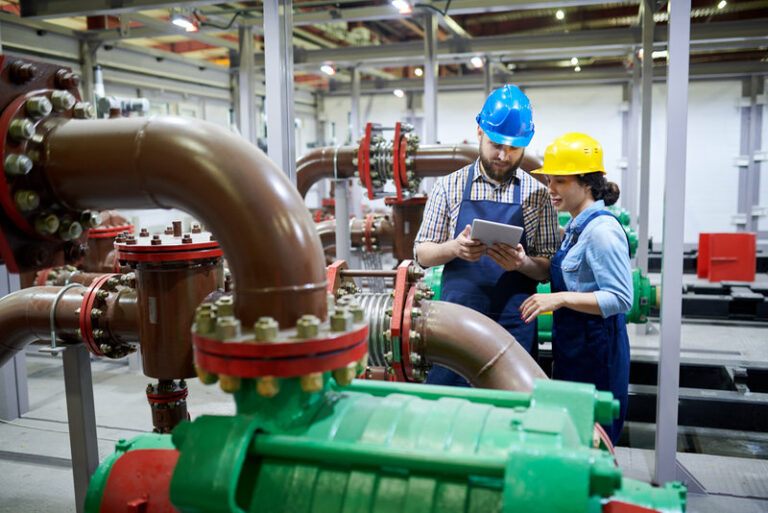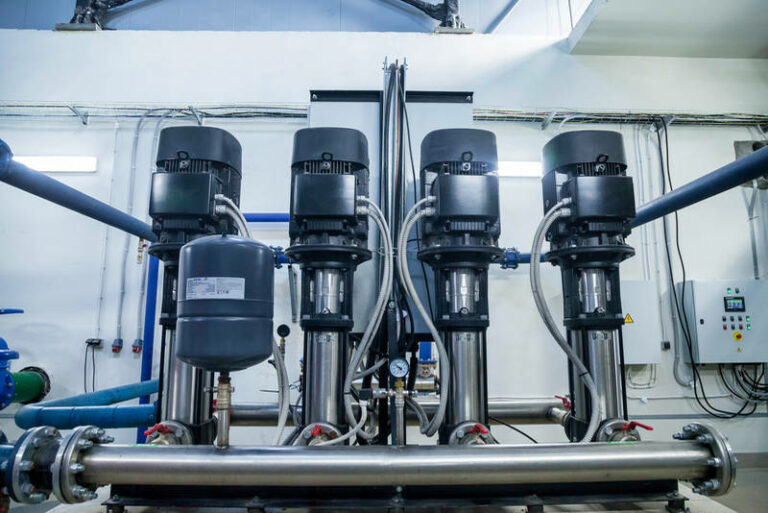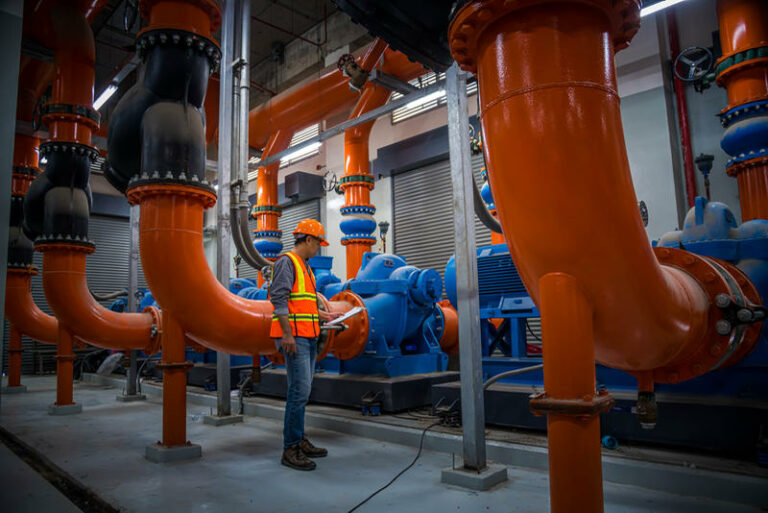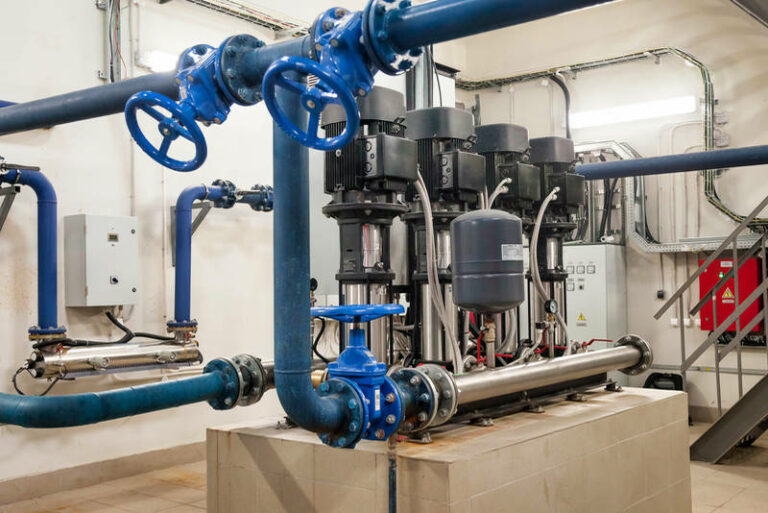
When it comes to maintaining operations in industries like manufacturing, water treatment, oil & gas, and HVAC, few components are as critical—and often overlooked—as industrial pump parts. While the pump as a whole might receive attention during installations or replacements, the parts within it—impellers, seals, bearings, casings, and more—are the true workhorses.
Understanding how these parts function, how they wear out, and how to properly select and maintain them can drastically reduce downtime, improve efficiency, and save your company thousands of dollars annually.
What Are Industrial Pump Parts?
Industrial pump parts refer to the individual components that make up the entire pump system. These include:
- Impellers – move fluid through centrifugal force.
- Casings – house the components and guide flow.
- Seals and Gaskets – prevent leakage and maintain pressure.
- Bearings and Shafts – transmit power and reduce friction.
- Wear Rings and Bushings – reduce metal-to-metal contact and wear.
Each of these plays a specific role in how well your pump performs.
Why Industrial Pump Parts Matter
Choosing the right parts and maintaining them properly is not just about technical specs—it’s about safeguarding your bottom line. Here’s why:
1. Performance and Flow Rates
The efficiency of a pump heavily depends on its impeller and casing design. Damaged or worn parts can lead to inconsistent flow rates, affecting process control and throughput.
2. Energy Consumption
Worn or mismatched pump parts can make the system work harder than necessary. According to the Hydraulic Institute, proper maintenance of industrial pump parts can improve energy efficiency by up to 20%.
3. Downtime and Repairs
Most pump failures begin with a single compromised part. Replacing that part proactively can prevent costly repairs or full-system shutdowns.
4. Total Cost of Ownership
While it may seem cheaper to delay part replacements, deferred maintenance can result in higher energy costs, emergency repairs, and more frequent equipment replacement.
Key Considerations When Selecting Industrial Pump Parts
When replacing or upgrading pump parts, consider the following:
1. Material Compatibility
Different applications require different materials:
- Stainless steel for corrosive environments
- Cast iron for general industrial use
- Bronze for marine and low-friction systems
2. Operating Conditions
High temperatures, pressures, or chemically aggressive environments may require specialized seals, coatings, or shaft materials.
3. OEM vs Aftermarket
While OEM parts offer guaranteed compatibility, high-quality aftermarket parts can be more affordable and available faster—just be sure to verify their standards.
4. Precision and Tolerances
Even small deviations in size or shape can lead to misalignment, leakage, or increased wear.
Common Causes of Industrial Pump Part Failure
Understanding what causes parts to fail can help you take proactive measures.
1. Cavitation
This occurs when vapor bubbles form in low-pressure areas and collapse, damaging impellers and casings.
2. Seal Leakage
Mechanical seals are often the first part to fail due to incorrect installation, vibration, or chemical incompatibility.
3. Bearing Wear
Poor lubrication or contamination can lead to bearing failure, which in turn causes shaft misalignment and pump damage.
4. Corrosion and Erosion
Harsh chemicals or abrasive solids in the fluid can erode parts over time, especially if material compatibility isn’t considered.
Maintenance Best Practices for Pump Parts
To extend the life of your pump and its parts, follow these proven maintenance strategies:
1. Routine Inspections
Set a schedule to inspect seals, impellers, and bearings. Early signs of wear can prevent catastrophic failures.
2. Lubrication Schedules
Always follow manufacturer guidelines for oil or grease lubrication, particularly for bearings and shafts.
3. Vibration Monitoring
Excessive vibration often signals misaligned or damaged components. Vibration sensors can detect problems early.
4. Use Condition Monitoring Tools
Infrared thermography, ultrasonic testing, and oil analysis can provide insights into pump health without disassembly.
When to Replace Industrial Pump Parts
It’s better to replace a part before it fails than after it causes collateral damage. Look for:
- Drop in flow rate or pressure
- Increase in noise or vibration
- Leaking from seals or flanges
- Frequent tripping of motors or drives
Keep an inventory of high-wear parts like seals and gaskets to reduce replacement time.
Energy Efficiency and Pump Parts
Upgrading worn or outdated parts can directly affect your energy bill. According to the U.S. Department of Energy:
“A 10% reduction in system pressure can yield up to a 6% energy savings.”
This means a new impeller or correctly sized bearing could lead to measurable savings over time.
Digital Tools and Predictive Maintenance
With the rise of Industry 4.0, smart sensors and IoT-enabled monitoring tools are transforming how companies manage pump parts. Benefits include:
- Real-time data on temperature, vibration, and pressure
- Predictive alerts before failure occurs
- Optimization of maintenance schedules
- Integration with CMMS (Computerized Maintenance Management Systems)
Choosing a Reliable Supplier for Industrial Pump Parts
Not all suppliers are created equal. When selecting a vendor:
- Verify they offer both OEM and high-grade aftermarket parts
- Check for ISO certifications or industry affiliations
- Ensure they offer technical support or consultations
- Look for companies with a large inventory to reduce lead times
Case Study: Downtime Reduction Through Part Optimization
A Denver-based manufacturing plant reduced its pump downtime by 35% in one year by:
- Standardizing impellers across multiple pump types
- Switching to ceramic-coated wear rings
- Implementing a vibration monitoring program
They calculated a $78,000 annual savings through energy efficiency and reduced repairs.
Industrial pump parts are more than just components—they are the backbone of reliable, efficient, and cost-effective operations. Investing in high-quality parts, monitoring their performance, and replacing them before they fail can yield significant long-term benefits.
By understanding the function, failure points, and maintenance needs of your pump components, you can ensure smoother operations, lower costs, and a more resilient system.
Want Help Sourcing the Right Industrial Pump Parts?
Contact Denver Pumps today for expert support, OEM and aftermarket parts, and custom recommendations tailored to your system.






